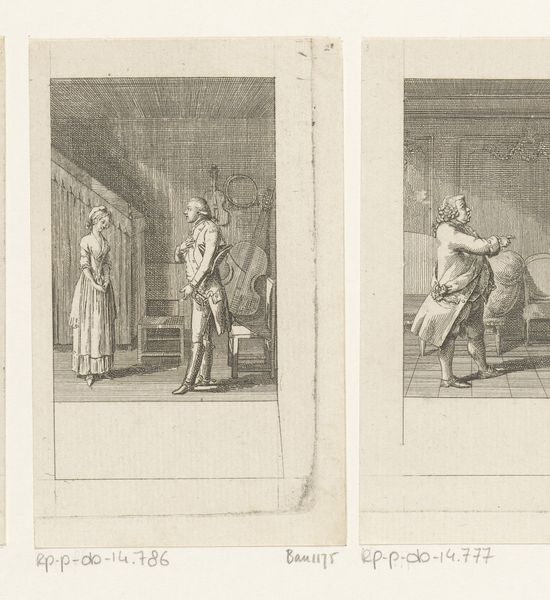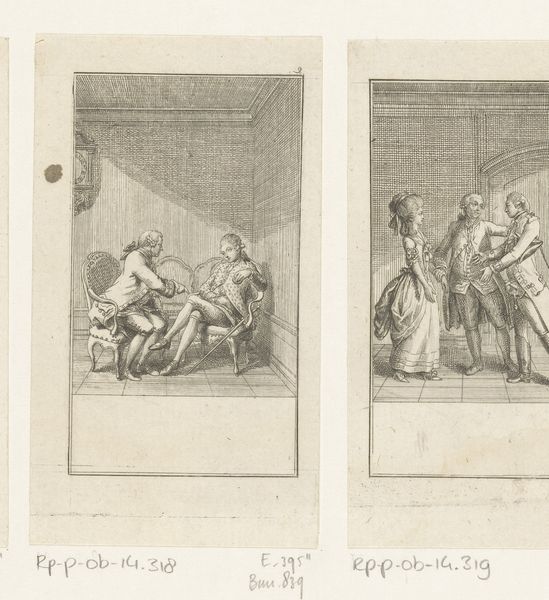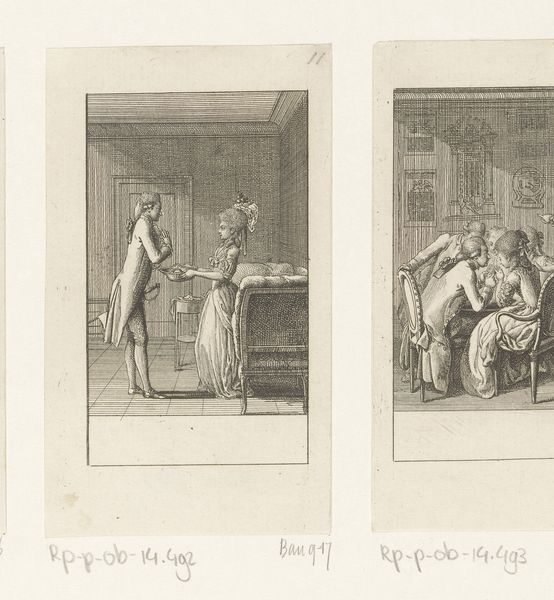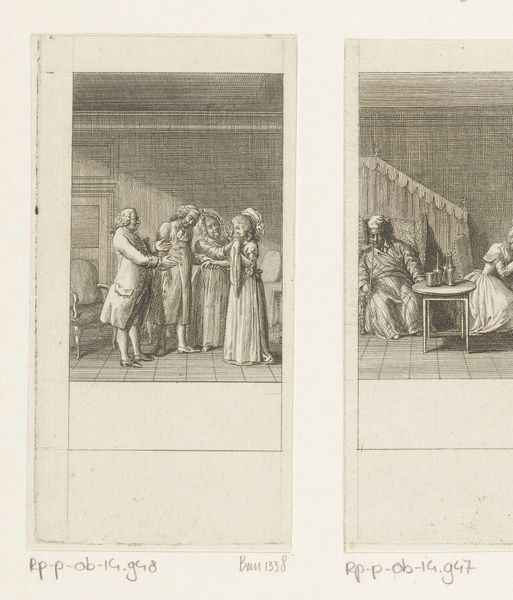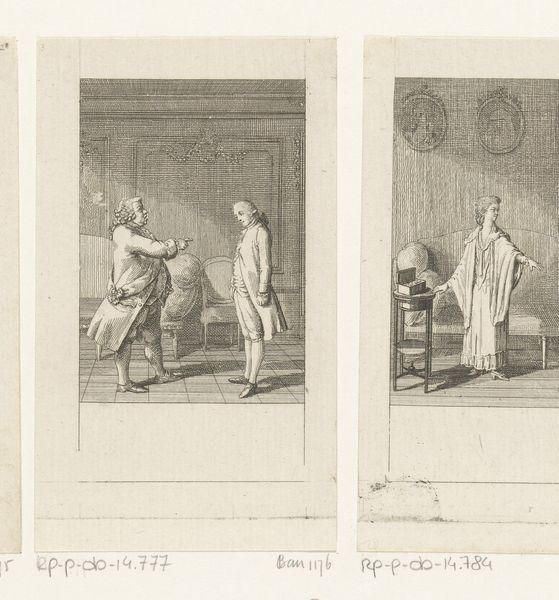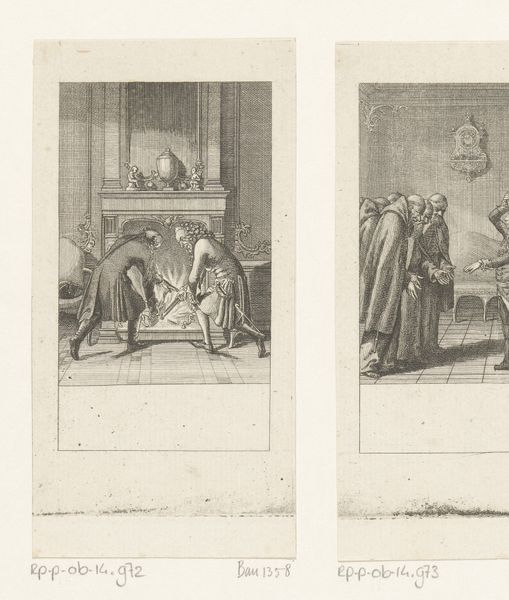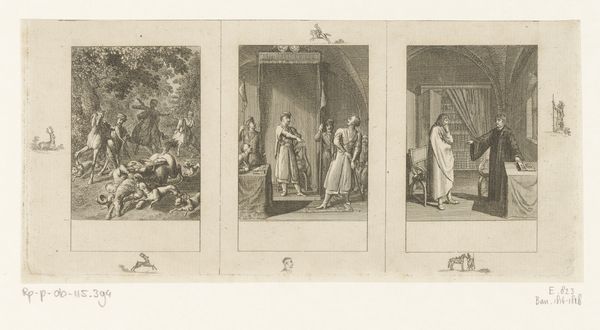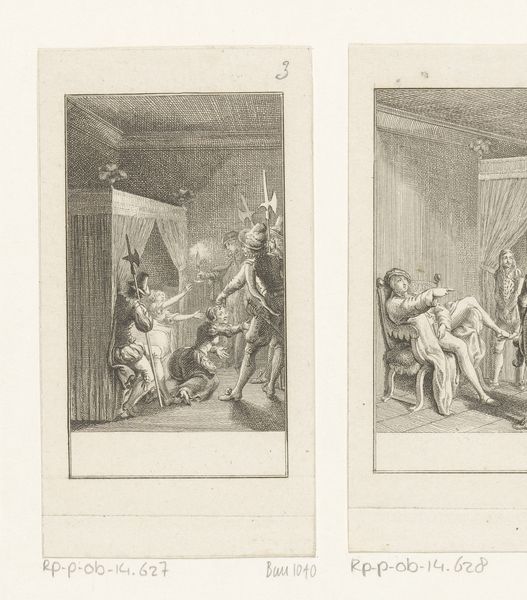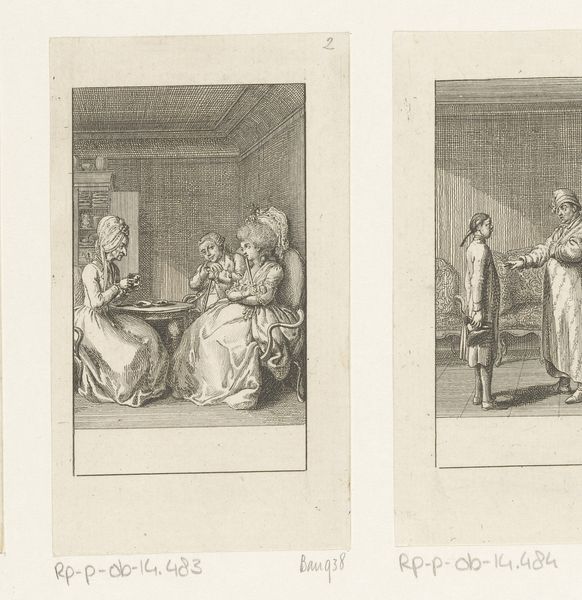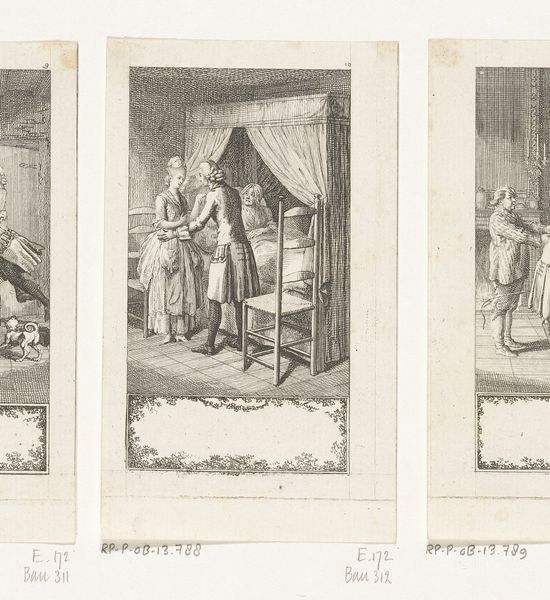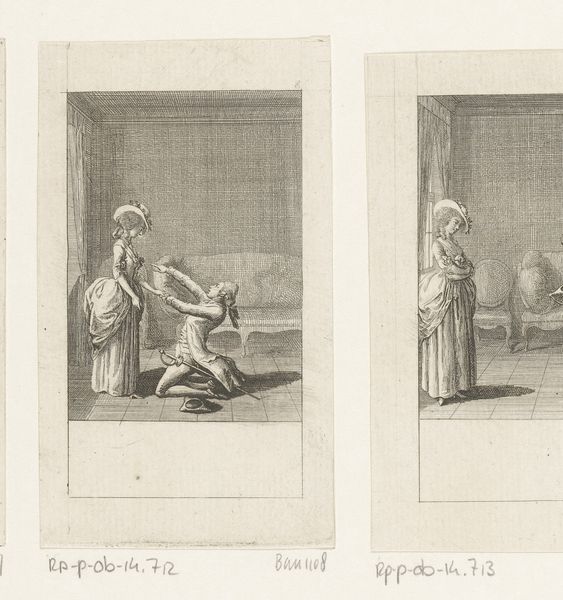
Dimensions: height 122 mm, width 63 mm
Copyright: Rijks Museum: Open Domain
Editor: This is "Huwelijk door liefde" or "Marriage through Love" by Daniel Nikolaus Chodowiecki, made in 1788. It's an engraving. The first panel depicts a couple, looking very young and intimate, and in the second we see them as a family. I find the contrast really striking. What strikes you when you look at this piece? Curator: This print offers a window into late 18th-century social ideals around marriage and domesticity. Given Chodowiecki's context, and the rise of Romanticism, it’s important to see this “love marriage” not just as a sweet sentiment, but potentially as a challenge to arranged marriages, which were the norm for many. What tensions do you see between personal emotion and societal expectations within the artwork? Editor: That's an interesting way to frame it. I see the evolution of the relationship but hadn’t considered it as a societal critique. Maybe the 'love' aspect was radical at the time. The transition to the second panel seems to indicate societal fulfillment – family, children – almost like love naturally leads to this. Curator: Exactly. The progression idealizes a very specific, and often unattainable, narrative. The ‘love marriage’ is seemingly validated through procreation and domestic stability. Consider, though, whose stories are excluded in this visual narrative? Think about women's limited agency during that period, or even economic constraints. Can a narrative be incomplete? Editor: So it's showcasing a very specific and potentially exclusionary idea of love and marriage, hiding complex realities. I didn't think of it that way at first. Curator: Precisely! By critically examining such idealized imagery, we can gain insights into the complex and often contradictory social norms of the time. Editor: It’s fascinating how a simple print can reveal such layers of social commentary when viewed through a critical lens! Thanks!
Comments
No comments
Be the first to comment and join the conversation on the ultimate creative platform.
